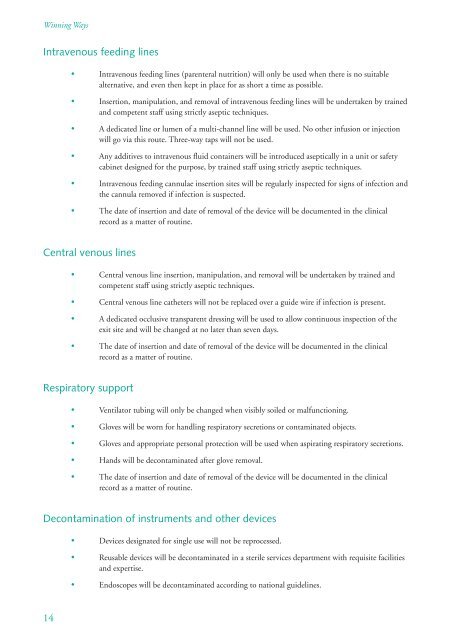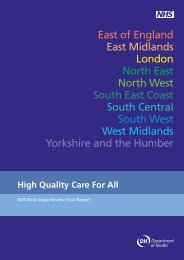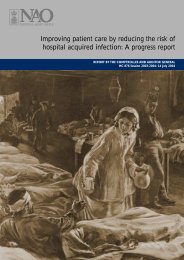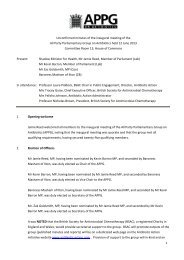78114-DoH-Winning Ways - Antibiotic Action
78114-DoH-Winning Ways - Antibiotic Action
78114-DoH-Winning Ways - Antibiotic Action
Create successful ePaper yourself
Turn your PDF publications into a flip-book with our unique Google optimized e-Paper software.
<strong>Winning</strong> <strong>Ways</strong><br />
Intravenous feeding lines<br />
• Intravenous feeding lines (parenteral nutrition) will only be used when there is no suitable<br />
alternative, and even then kept in place for as short a time as possible.<br />
• Insertion, manipulation, and removal of intravenous feeding lines will be undertaken by trained<br />
and competent staff using strictly aseptic techniques.<br />
• A dedicated line or lumen of a multi-channel line will be used. No other infusion or injection<br />
will go via this route. Three-way taps will not be used.<br />
• Any additives to intravenous fluid containers will be introduced aseptically in a unit or safety<br />
cabinet designed for the purpose, by trained staff using strictly aseptic techniques.<br />
• Intravenous feeding cannulae insertion sites will be regularly inspected for signs of infection and<br />
the cannula removed if infection is suspected.<br />
• The date of insertion and date of removal of the device will be documented in the clinical<br />
record as a matter of routine.<br />
Central venous lines<br />
• Central venous line insertion, manipulation, and removal will be undertaken by trained and<br />
competent staff using strictly aseptic techniques.<br />
• Central venous line catheters will not be replaced over a guide wire if infection is present.<br />
• A dedicated occlusive transparent dressing will be used to allow continuous inspection of the<br />
exit site and will be changed at no later than seven days.<br />
• The date of insertion and date of removal of the device will be documented in the clinical<br />
record as a matter of routine.<br />
Respiratory support<br />
• Ventilator tubing will only be changed when visibly soiled or malfunctioning.<br />
• Gloves will be worn for handling respiratory secretions or contaminated objects.<br />
• Gloves and appropriate personal protection will be used when aspirating respiratory secretions.<br />
• Hands will be decontaminated after glove removal.<br />
• The date of insertion and date of removal of the device will be documented in the clinical<br />
record as a matter of routine.<br />
Decontamination of instruments and other devices<br />
14<br />
• Devices designated for single use will not be reprocessed.<br />
• Reusable devices will be decontaminated in a sterile services department with requisite facilities<br />
and expertise.<br />
• Endoscopes will be decontaminated according to national guidelines.





